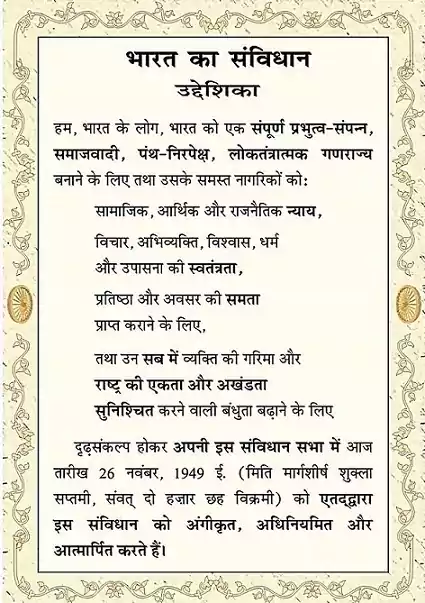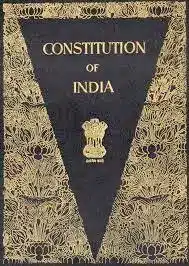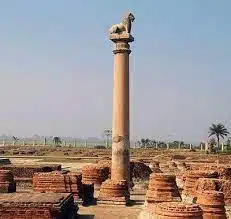History Questions Of Civil Services Preliminary Examination 2020
With reference to the cultural history of India, which one of the following is the correct description of the term ‘Paramitas’?
a) The earliest Dharmashastra texts written in aphoristic (sutra) style
b) Philosophical schools that did not accept authority of Vedas
c) perfections whose attainment led to the Bodhisattva path
d) Powerful merchant guilds of early medieval South India
Answer (C)
In the context of Indian history, the Rakhmabai case of 1884 revolved around
- Women’s right to gain education
- Age of consent
- Restitution of conjugal rights
Select the correct answer using the code given below:
a) 1 and 2 only b) 2 and 3 only c) 1 and 3 only d) 1,2 and 3
Answer D) 1, 2 and 3
Indigo cultivation in India declined by the beginning of the 20th century because of
a) Peasant resistance to the oppressive conduct of planters
b) Its unprofitability in the world market because of new invention
c) National leaders’ opposition to the cultivation of indigo
d) Government control over the planter
Answer B) The indigo production collapsed in Bengal, after the revolt. Discovery of synthetic dyes in the late nineteenth century severely affected the business.
Wellesley established the fort William College at Calcutta because
a) He was asked by the Board of Directors at London to do so
b) He wanted to revive interest in oriental learning in India
c) He wanted to provide William Carey and his associates with employment
d) He wanted to train British civilians for administrative purpose in India
Answer D)
With reference to the history of India, ‘Ulgulan’ or the great Tumult is the description of which of the following events?
a) The Revolt of 1857
b) The Mappila Rebellion of 1921
c) The Indigo Revolt of 1859-60
d) Birsa Munda’s Revolt of 1899-1900
Answer D) Birsa Munda’s revolt of 1899-1900
With reference to the scholars/litterateurs of ancient India, consider the following statements:
- Panini is associated with Pushyamitra Shunga.
- Amarasimha is associated with Harshvardhana
- Kalidasa is associated with Chandra Gupta – II
Which of the statements given above is/are correct?
a) 1 and 2 only
b) 2 and 3 only
c) 3 only
d) 1,2 and 3
Answer: C
With reference to the history of India consider the following pairs:
- Aurang – In-charge of treasury of the state
- Banina – Indian agent of the East India Company
- Mirasidar – Designated revenue payer to the State
Which of the paris given above is/are correctly matched?
a) 1 and 2 only
b) 2 and 3 only
c) 3 only
d) 1, 2 and 3
Answer B)
With reference to the religious history of India, consider the following statements:
- Sthaviravadins belong to Mahayana Buddhism
- Lokottaravadin sect was an offshoot of Mahasanghika sect of Buddhism.
- The deification of Buddha by Mahasanghikas fostered Mahayana Buddhism.
Which of the statements given above is/are correct?
a) 1 and 2 only
b) 2 and 3 only
c) 3 only
d) 1, 2 and 3
Answer B) 2 and 3 only
Which of the following statements correctly explains the impact of the Industrial Revolution on India during the first half of the nineteenth century?
a) Indian handicrafts were ruined.
b) Machines were introduced in the Indian textile industry in large numbers.
c) Railway lines were laid in many parts of the country.
d) Heavy duties were imposed on the imports of British Manufactures.
Answer A)
Consider the following events in the history of India:
- Rise of Pratiharas under King Bhoja
- Establishment of Pallava power under Mahendravaraman- I
- Establishment of Chola power by Parantaka – I
- Pala dynasty funded by Gopala
What is the correct chronological order of the above events, starting from the earlies time?
a) 2-1-4-3
b) 3-1-4-2
c) 2-4-1-3
d) 3-4-1-2
Answer C) 2-4-1-3
Which of the following phrases defines the nature of the ‘Hundi generally referred to in the sources of the post Harsha period?
a) An advisory issued by the king to his subordinates
b) A diary to be maintained for daily accounts
c) A bill of exchange
d) An order from the feudal lord to his subordinates
Answer C) A bill of exchange
With reference to the book “Desher Katha” written by Sakharam Ganesh Deuskar during the freedom struggle, consider the following statements:
- It warned against the Colonial State’s hypnotic conquest of the mind.
- It inspired the performance of swadeshi street plays and folk songs.
- The use of “desh” by Deuskar was in the specific context of the region of Bengal
Which of the statements given above are correct?
a) 1 and 2 only
b) 2 and 3 only
c) 1 and 3 only
d) 1,2 and 3
Answer. (d)
The Gandhi-Irwin Pact included which of the following?
- Invitation to congress to participate in the Round Table conference
- Withdrawal of Ordinance promulgated in connection with the civil Disobedience Movement
- Acceptance of Gandhiji’s suggestion for enquiry into police excesses
- Release of only those prisoners who were not charged with violence
Select the correct answer using the code given below:
a) 1 only
b) 1, 2 and 4 only
c) 3 only
d) 2, 3 and 4
Answer. b
Features of Gandhi-Irwin Pact
• The Indian National Congress (INC) agreed to take part in the Round Table Conference.
• The INC would stop the civil disobedience movement.
• Withdrawal of all ordinances that curbed the activities of the Congress.
• Withdrawal of all prosecutions except those involving violent crimes.
• Release of those who were arrested for taking part in the civil disobedience movement.
• Removal of the salt tax.
The Vital Vidhavansak, the first monthly journal to have the untouchable people as its target audience was published by
a) Gopal Baba Walankgar
b) Jyotiba Phule
c) Mohandas Karamchand Gandhi
d) Bhimrao Ramji Ambedkar
Answer. a
With reference to the history of India, the terms “kulyavapa and “dronavapa” denote
a) measurement of land
b) coins of different monetary value
c) classification of urban land
d) religious rituals
Answer. a
Who among the following rulers advised hsi subject through the inscription?
“Whosoever praises his religious sect or blames other sects out of excessive devotion to blames other sects out of excessive devotion to his own sect, with the view of glorifying his own sect, he raither injures his own sect very severely.”
a) Ashoka
b) Samudragupta
c) Harshavardhana
d) Krishnadeva Raya
Answer. a)
With reference to the history of India,
consider the following pairs :
Famous Place – Present State
- Bhilsa – Madhya Pradesh
- Dwarasamudra – Maharashtra
- Girinagar – Gujarat
- Sthanesvara – Uttar Pradesh
Which of the pairs given above are correctly matched ?
(a) 1 and 3 only (b) 1 and 4 only (c) 2 and 3 only (d) 2 and 4 only
Answer. (a)
With reference to the period of Gupta dynasty in ancient India, the towns Ghantasala, Kadura and Chaul were well known as
(a) ports handling foreign trade
(b) capitals of powerful kingdoms
(c) places of exquisite stone art and architecture
(d) important Buddhist pilgrimage centres
Answer (a)
With reference to the cultural history of India, consider the following pairs:
- Parivrajaka – Renunciant and Wanderer
- Sharmana – Priest with a high status
- Upasaka – Lay follower of Buddhism
Which of the pairs given above are correctly
a) 1 and 2 only
b) 1 and 3 only
c) 2 and 3 only
d) 1, 2 and 3
Answer. c) 1 and 3. its answer even could be (d) as well because Shramana was a wandering monk in certain austere traditions of ancient India, including Jainism, Buddhism, and Ajivika religion.
Also refer :







